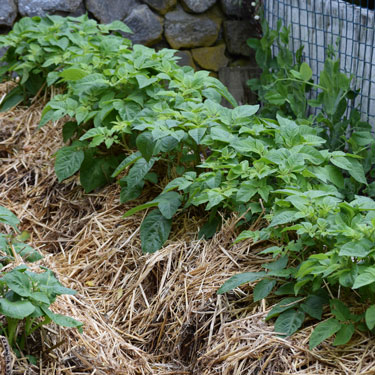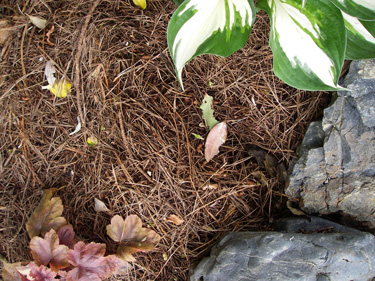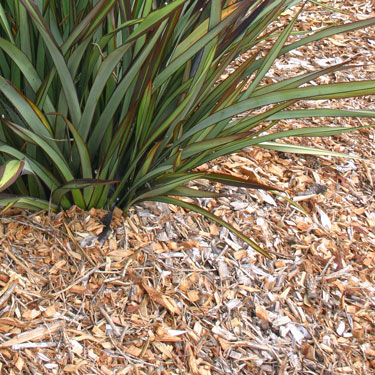Lay mulch
A mulch is a layer of material spread on the soil surface. Useful in any part of the garden, including the vege patch, mulching can save a great deal of time and energy and is one of the most important practices when creating a healthy garden while caring for the environment. Here are four great reasons to mulch:
- Conserves moisture by slowing down evaporation.
- Protects plant roots from temperature extremes.
- Suppresses weed growth, and as a consequence reduces the plant damage caused by hoes, trowels, and lawn mowers.
- Organic mulches enhance and replenish the soil structure for future plant growth.
- An even layer of mulch improves the look of a garden.
Organic mulches such as pine bark, pine needles, leaves, wood chip, pea straw, compost and sawdust improve soil structure (and moisture holding ability) as they break down. But because they break down they need to be replenished, usually once a year.
Pebbles and stones make a decorative finish, and work well with heat loving succulents. They don’t enrich the organic content of the soil but they do prevent water loss. Pebble mulches can be difficult to keep clean when there is lots of leaf litter about. Next to lawns, stray stones can be a hazard at mowing time.
Weed mat is an effective weed barrier, useful under pebble pathways or other non-planted areas, but in planted garden it is not the best option. Weeds eventually find their way through the cut holes, and when organic mulch is spread over weed mat, the weed control will last only as long as it takes for the mulch to break down into compost, perfect for weed seeds to germinate in. Weed mat can restrict the flow of water and air to the soil.
How to lay mulch
It is usually easiest to lay mulch after, rather than before, planting to avoid mixing soil with mulch. Wear a mask when using organic mulches as they can be dusty and may contain organisims that may affect your health.
- Clear or spray weeds. Be sure to eradicate all trace of perennial weeds. You may need to spray more than once.
- Apply slow release fertiliser, blood and bone or sheep pellets.
- Water thoroughly.
- (Optional) Lay newspaper (at least 12 sheets thick) as an extra weed barrier. Wet thoroughly.
- Spread mulch to an even depth of 5 - 8cm, taking care not to pile it up around stems or trunks.
Note: Mulched gardens should be watered thoroughly so that the water soaks into the ground below, and is not all absorbed by the mulch.
11-Nov-2016

Pea straw

Pine needles

Wood chip


